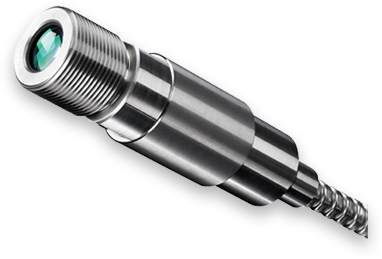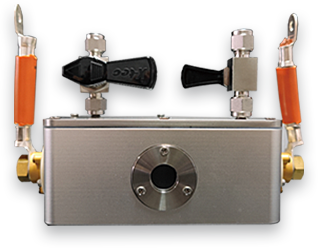
| Product Parameters | ||
| Version | Flagship | Simplified |
| model | CIS-JH-V4.0.0 | CIS-JH-V4.0.0-TD |
| powered by | Three-phase 380V/40A | AC220V/16A |
| Output voltage | 0-40V | 0-12V |
| Output Current | 0-500A | 0-170A |
| Current ramp time | 2ms | 20ms |
| Minimum pulse width can be set | 1ms | _ |
| Count pulses can be set | 255 | _ |
| Data collection cycle | 5ms | 5ms |
| Data communication method | RS485+Ethernet+USB | RS485+Ethernet+USB |
| Data collection method | Touch screen + PC | Touch screen + PC |
| Data control method | Touch screen + software | touchscreen |
| Data collection content | Real-time temperature, real-time voltage, real-time current | Real-time temperature, real-time voltage, real-time current |
| Clamping electrode | Fixed | Adjustable spacing |
| Maximum temperature | 3000℃ (sample stage types, specifications and characteristics vary) | 1800℃ (sample stage types, specifications and characteristics vary) |
| Long-term heat preservation | Long term within 2000℃ (taking 100*20*1mm graphite plate as an example) | None (can be customized according to needs) |
| Control Mode | The equipment has various control modes such as heat preservation, program control, slope, thermal shock, etc., and is compatible with custom curves such as S curve and sine wave curve. | The equipment has various control modes such as insulation, slope, manual, etc. |
| Temperature measurement method | Infrared temperature measurement | Infrared temperature measurement |
| Temperature measurement range | 250-2000℃/700-3200℃/550-3000℃ (Imported) | 100-1400℃/250-2000℃ |
| Power supply cooling method | Water Cooling | Air Cooling |
| Vacuum chamber | 304 stainless steel, square, Φ16mm observation window, sapphire window, volume about 400ml, cavity with water cooling | Aluminum alloy, square, Φ16mm observation window, sapphire window, volume about 400mL |
| Gas path device | 1 air intake, 1 vacuum, 1 exhaust | 1 air intake, 1 vacuum, 1 exhaust |
| Vacuum Pump | Standard VRD-8, vacuum pump | OPR-DV2 |
| Standard sample stage material | Flexible graphite paper, graphite plate, graphite tube, graphite boat, etc. (can also be adapted to other types of sample stages) | Graphite paper, 50mm long graphite boat, 20mm long graphite tube, 50mm long tungsten boat |
| Sample stage size (customizable) | ≤100mm*15mm*0.2mm | ≤55mm*10mm*0.05mm |
| Sample test volume | 500mg (specific gravity 1) | 50mg |
| Overall size (length, width and height) | About 750mm*610mm*660mm (subject to actual conditions) | About 510mm*624mm*600mm (subject to actual size) |

German Opus probe (0ptris CTratio 2M model)
Higher accuracy (with an ambient temperature range of 23 ± 5 ℃, system accuracy of ± 0.5% measurement temperature+2 ℃; repeatability accuracy of ± 0.3% measurement temperature+2 ℃;
Observation windows that are largely resistant to dust, steam, and dirt. Accurate measurement can be carried out with up to 90% window pollution;
Fast response time, data acquisition cycle as low as 1ms;
Three temperature ranges are available: 550-3000 ℃, 275-1000 ℃ (to be ordered), and 400-1500 ℃ (to be ordered).

JH series accessories
Model: JHex-001;
Purpose: Provide a small vacuum environment with heating function, suitable for sample migration and experimentation in clean environments such as glove boxes.
Analysis of the Results of Biocarbon Flash Preparation of Graphene
The following figure is a comparison of Raman spectra between graphite and graphene. It can be seen whether it is graphene, and the key is to look at the 2D peak
Bulk procurement, customized needs, technical consultation, etc., please leave your needs and contact information, we will get in touch with you as soon as possible